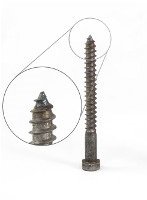- Joined
- Sep 10, 2012
- Messages
- 49
Am thinking about making butt plate screws for an old rifle. Do you make wood screws the same way as metal screws? The one I'm looking at is ~ 6 tpi, but there is a lot of root between the teeth. Is there some trick or is it just basic thread cutting?
Thanks,
-06
Thanks,
-06


